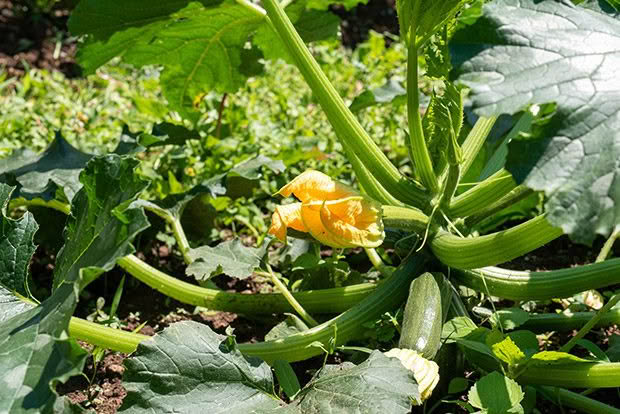9 tasks for a thriving garden in February: Sow herbs and brassicas, prevent courgette mildew

Ensure all plants — mature or wee seedlings— are healthy in the height of summer and reap the rewards later.
Words: Jane Wrigglesworth
1. Sow seeds or plant seedlings of herbs such as basil, borage, caraway, chervil, chives, coriander, dill, fennel, hyssop, lemon balm, lemongrass, lemon verbena, lovage, marjoram, oregano, parsley, sage, tarragon, and thyme.
2. Sow or plant seedlings of beetroot, broccoli, Brussels sprouts, cabbages, carrots, cauliflowers, kohlrabi, radishes, silver beet, and spinach.
3. Sow land cress in containers or garden beds. Plant in moist soil and part shade – this peppery plant does best in cooler spots over summer. Keep plants well watered and the leaves will be ready to harvest in 7-8 weeks.
4. Sow seeds of Japanese radish (daikon). The long, white, mild-tasting roots can be steamed, stir-fried, pickled, or grated and eaten raw. Grow in full sun in moist, fertile soil and space accordingly; roots can grow up to 40cm long by 6cm wide. Don’t let the roots over-mature or they’ll become pithy.
5. If your worm bin smells rotten or vinegary, it’s too acidic. Add a sprinkle of agricultural lime to neutralise the pH and cover food with damp paper. Avoid adding acidic foods, such as citrus, and don’t overfeed your worms by adding lots of food to it. Crushed eggshells (calcium carbonate) also help and provide grit, which helps the worms to digest foods.
6. Save lettuce seeds. Lettuce bolts to seed quickly in the summer heat. Let a few of your plants flower and collect the seeds for replanting or storing until next spring.
7. Alyssum, borage, calendula, cornflower, dianthus, marigolds, and violas are great edible options that brighten up salads, desserts, baking, and cheeseboards. Violas are a winner because they have a mild flavour, and you can eat the whole flower. Most other edible flowers have to be pulled apart so you only eat the petals, and not pistils or stamens.
8. High humidity contributes to mildew on courgettes, cucumbers, melons, and pumpkins. Spray with a fungicide to prevent it spreading, or make a baking soda solution: add 5 tbsp vegetable oil, 2 tbsp baking soda, 1 tsp Castile liquid soap, and 2 litres of water into a spray bottle and shake to mix.
Spray plants, covering both sides of the leaves and stems. Reapply every 5-7 days as a prevention method. Use a fresh mixture each time. Remove the old, diseased leaves before spraying and bin or burn them. Don’t cut away healthy foliage; you’ll reduce the nutrients going to developing fruit.
9. Sow turnips to harvest in autumn – baby turnips are ready in about 8 weeks. If you’d rather feed the root to pigs or other livestock (chop them into pieces), you can eat the leaves – cook as you would for spinach or add raw to salads and sandwiches.
HOW TO USE TURNIPS
If you’ve never grown turnips before, you may not know you can eat them raw in a refreshing salad. Wash 2 medium-sized or 3 small turnips (300g) – peel off tough parts of the skin.
Grate into a bowl, then add 5 tsp of finely chopped fresh coriander. Toss and serve with a vinaigrette (1 tsp Dijon mustard, 1 finely chopped clove of garlic, 2 tbsp white wine vinegar, ¼ cup olive oil).
 This article first appeared in NZ Lifestyle Block Magazine.
This article first appeared in NZ Lifestyle Block Magazine.
